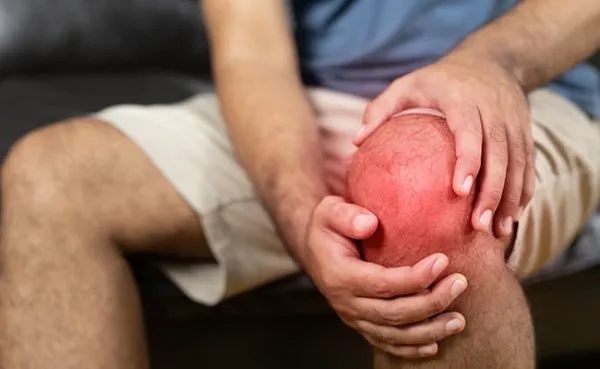In a study involving 297 participants with an average age of 33.7 years, over half exhibited signs of joint damage, even in the absence of knee pain. One of the primary factors identified as contributing to these early changes is High Body Mass Index (BMI) which is excess weight significantly increasing stress on knee joints, accelerating wear and tear. These findings underscore the importance of weight management and overall joint health, even in the absence of pain, to prevent long-term knee issues. In this article, we discuss some tips you can follow to prevent knee pain in your 30s and 40s. Knee pain isn't just an old age issue, it's increasingly affecting people in their 30s and 40s. These changes can lead to knee osteoarthritis (OA) if not addressed proactively. To help you protect your knees and maintain an active lifestyle, below we share some easy-to-follow prevention tips.
Prevention tips for knee pain in 30s and 40s
1. Maintain a healthy weight
Excess body weight increases stress on knee joints, accelerating wear and tear. The Osteoarthritis Prevention Study (TOPS) found that a combination of dietary weight loss and exercise can reduce the incidence of structural knee OA in women at risk. This approach addresses biomechanical, psychological, and inflammatory pathways associated with knee OA.
2. Engage in regular exercise
Regular physical activity strengthens muscles around the knee, improving joint stability. A systematic review of 39 studies concluded that exercise interventions are beneficial for relieving pain and improving function in individuals with knee OA. These interventions include strength training, aerobic exercises, and flexibility routines.
3. Strengthen supporting muscles
Focusing on strengthening the quadriceps, hamstrings, and calf muscles can provide better support to the knee joint. Strength training has been associated with reduced knee pain and improved function in individuals with knee OA.
4. Warm-up and cool down
Proper warm-up and cool-down routines before and after physical activities can prevent injuries. These routines prepare the muscles and joints for activity and help in recovery post-exercise.
5. Wear appropriate footwear
Wearing shoes that provide adequate support and cushioning can reduce stress on the knees. Footwear that aligns the feet properly can prevent misalignment and reduce the risk of knee pain.
6. Avoid prolonged sitting
Sitting for extended periods can lead to stiffness and weakness in the muscles supporting the knee. Taking short breaks to stand and move around can alleviate pressure on the knee joint.
7. Use proper techniques
Using correct posture and techniques during physical activities can prevent undue stress on the knee. For instance, lifting techniques that engage the legs rather than the back can protect knee joints.
8. Stay hydrated
Adequate hydration is essential for joint lubrication. Dehydration can lead to reduced synovial fluid, increasing friction and wear on the knee joint.
9. Monitor bone health
Ensuring sufficient intake of calcium and vitamin D supports bone strength. These nutrients play a crucial role in maintaining bone density and preventing conditions like osteopenia and osteoporosis, which can affect knee health.
10. Seek early medical advice
If you experience persistent knee discomfort, consult a healthcare professional promptly. Early intervention can address potential issues before they develop into more serious conditions.
The increasing prevalence of knee pain among individuals in their 30s and 40s underscores the importance of proactive health measures. By adopting a healthy lifestyle, engaging in regular physical activity, and being mindful of joint health, individuals can significantly reduce the risk of developing knee-related issues.
Disclaimer: This content including advice provides generic information only. It is in no way a substitute for a qualified medical opinion. Always consult a specialist or your doctor for more information. NDTV does not claim responsibility for this information.
References
Early structural changes in the knees common by age 30 - often without symptoms. University of Oulu, Finland, updated 2025.
The Osteoarthritis Prevention Study (TOPS) - A randomised controlled trial of diet and exercise to prevent Knee Osteoarthritis: Design and rationale. NLM, 2023.
Exercise Therapy for Knee Osteoarthritis: A Systematic Review and Meta-Analysis. NLM, 2022.
Strength Training Is Associated With Less Knee Osteoarthritis. NLM, 2023.
EULAR recommendations for the non-pharmacological core management of hip and knee osteoarthritis. NLM, 2021.
Management of osteoarthritis of the knee in younger patients. NLM, 2018.
Impact of low-load blood flow restriction training on knee pain and function in individuals with knee osteoarthritis. NLM, 2023.
